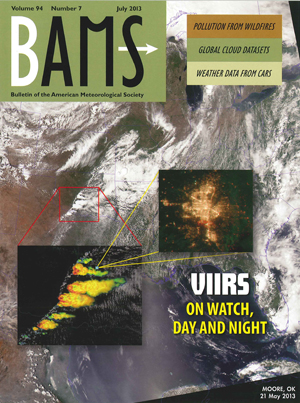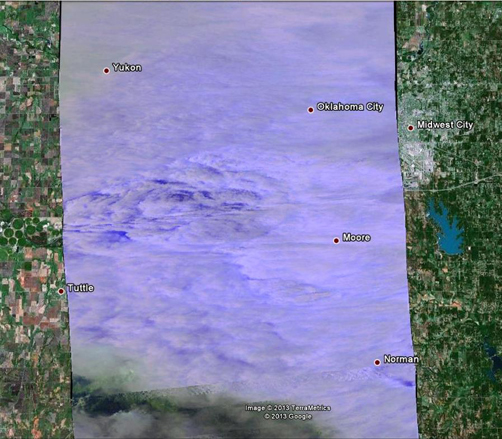A market research report released this month predicts that vehicle fleet management solutions, involving both software and hardware, will balloon from a $10 billion to a $30 billion industry within five years. The Dallas-based company Markets and Markets cites not only growing numbers of planes, trucks, cars, and ships, especially in Asia, but also several trends that tap the expertise of atmospheric scientists: “The environmental concerns, CO2 emission reduction norms, and fleet operators’ need for operational efficiencies are expected to serve as major drivers for the fleet management market.”
The report echoes the message of another report issued just a month ago by the market research firm, Technavio, which touted double-digit growth in the global intelligent transportation systems markets through 2016.
This can only be good news for a weather community that is already essential to fleet management in the aviation and maritime industries, right? Well, maybe. Especially in the area of smart surface transportation, the opportunities are huge, but everything depends on yet-to-be specified, rapidly evolving markets and technologies. This is a formative moment in that market–a drive-by opportunity. The chance to embed meteorological priorities in this burgeoning field–specifically, equipping vehicles to report key environmental variables to the meteorological community–may pass by quickly. Hence, several years ago an AMS Annual Partnership Committee on Mobile Observations was asked to “articulate a clear vision for mobile data that captures the immense opportunities for these data to improve surface transportation weather services.”
The resulting report is available on the web (here). However, in case you don’t have time to read all 88 pages there, or if you missed the multiple sessions on transportation at this week’s AMS Summer Community Meeting, you have another option. Read the shorter version of the report, by William Mahoney and James O’Sullivan, in the July issue of BAMS.
The article, “Realizing the Potential of Vehicle-Based Observations,” stresses that the involvement of meteorology in intelligent vehicle systems is not a given—our community has to be engaged in the broader technological efforts that are already underway.
Whether this opportunity is acted upon or missed (at least initially) will depend greatly on the weather community’s technical understanding and eventual adoption of … unique datasets and their level of participation in connected vehicle initiatives within the transportation community.
The stakes are obvious, both in getting real-time weather information to drivers and in getting that data into the hands of the atmospheric science community. More than 7,000 people are killed, and more than 600,000 are injured, annually in weather related accidents on the road. Meanwhile,
the availability of hundreds of millions of direct and derived surface observations based on vehicle data will have a significant impact on the weather and climate enterprise. The potential improvements in weather analysis, prediction, and hazard identification should have a large positive effect on all weather-sensitive components of the U.S. economy and the capability to sense the lower atmosphere at finer scales than traditional observation systems, which will improve the detection and diagnosis of extreme weather events that affect lives and property.
It’s no accident, then, that meteorologists are eyeing your car as the observing platform for this future transformation. Mahoney and O’Sullivan detail some of the possibilities:
Vehicle-based air temperature observations could provide additional temporal and spatial specificity required to more clearly identify rain/snow boundaries; also, antilock brake and vehicle stability control event data could support the diagnosis of slippery pavement conditions. Even the most common components of the vehicle can begin to tell a story about the near-surface atmospheric and pavement conditions through the intelligent utilization of vehicle data elements, such as windshield wiper state, external air temperature, headlamps, atmospheric pressure, sun sensors, vehicle stability control, and the status of an antilock breaking system.
For all the benefits of vehicle-based observing networks, however, there are significant challenges. For example, Mahoney and O’Sullivan note, “Traditionally, near-surface weather observations have been generated by stationary platforms. Taking observations from mobile platforms, particularly passenger and fleet vehicles, introduces new dimensions of complexity.” In addition, among other obstacles:
Many of the normal concerns associated with dedicated weather sensors—siting, maintenance, and calibration—are exacerbated with mobile sensors, especially when large numbers are to be sited on a wide variety of vehicles driven by people with varying interest in those sensors. The best place to site a temperature sensor on a particular model of car may not be the best location for a pressure sensor, and the best place for a particular sensor on one model of car might not even exist on another model.
Beyond the hopes of placing dedicated weather sensors on cars, there are, of course, existing engine sensors and weather-related vehicle behavioral data:
This type of information could be made available quickly without deployment of new sensors, it is considered to be the “low-hanging fruit” of mobile weather sensing. However, it presents some very challenging calibration issues and may ultimately not provide consistent enough information for weather applications.
There are also communications challenges: one intelligent transportation solution that is gaining traction involves direct, dedicated short-range vehicle-to-vehicle communications links between cars sharing the road. The weather community, by contrast, will require longer-range communications solutions to gather information from vehicles; somehow short-range, on-the-road links will need to be integrated with other options such as existing cellular networks creates new challenges .
Meanwhile, there are not just technical but also fiscal and institutional—perhaps legal and regulatory—barriers to successful implementation of the roadway network goals. The report emphasizes that there are solutions to these barriers, even though “a litany of barriers…may leave … the impression that mobile weather observing is too difficult, too costly, or otherwise too problematic to achieve on any useful scale.”
The institutional barriers make plain why improving forecast services for transportation was a vital one for consideration during the high-level considerations at the AMS Summer Community meeting, and by all of us in the weather and climate community. Mahoney and O’Sullivan show that the challenge of emerging roadway systems is an opportunity to shape development of the weather community and how it works:
Management of highways and the traffic they carry involves a large number of active participants, including the federal government, states, counties, municipalities, and regional authorities. In addition, the immature nature of road weather management offers numerous opportunities for entrepreneurial innovation, opening the door for commercial entities with potentially unconventional approaches to deploying mobile weather sensors and managing and exploiting the data from those sensors. At this point, it is not clear that, with all the various participants with their differing needs and agendas, the mobile weather observing enterprise is manageable in the normal sense of the word. In any case, there is no overall authoritative vision for the deployment, operation, management, and governance of mobile weather observing capability, let alone a high-level strategy, concept of operations, or implementation plan.

